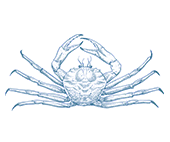




- Better Choice
Wild Caught
Region:
VIC
- Southern garfish are mostly caught using haul seine nets that are low impact on habitat and other species.
- Southern garfish stocks in the Corner Inlet, where most Victorian fishing occurs, are healthy.
- Southern garfish are caught using fishing methods that are low impact on habitat and other species.
- Pipefish are caught as bycatch; an industry code of practise aims to improve the survival rates of bycatch, and almost all pipefish are reported as released alive.
- Corner Inlet Fishery, Port Phillip Bay Fishery (59t in 2018/19, 54t in 2017/18)
Southern garfish are found in surface waters of estuaries, bays, inlets and gulfs around Australia. Definitive information on the distribution of southern garfish stocks is generally lacking, particularly as most of the fisheries are small in scale.
In Victoria, fishery managers assess the health of the fish stock by looking at historical catch information and the sizes and ages of the fish caught, among other metrics.The southern garfish stock caught by Victorian fishers appears healthy.
Southern garfish is caught using haul seine nets in Victoria. This fishing method has a low impact on habitats and other species; as fishers are present at the nets during fishing activity, endangered wildlife and unwanted catch can be released alive.
Corner Inlet fishers have developed a Code of Practise to improve the survival of released fish, and reporting of endangered wildlife interactions has improved in recent years. Pipefish are the predominant bycatch species caught in fishing activity, and fishery reports indicate almost all were released alive.
New regulations proposed by fishers have been operating in the Corner Inlet fishery since 2020 which has reduced fishing effort from a peak in 2019 and better protected fish stocks, other species and habitats. This proactive approach from Corner Inlet Fishers is welcome.
The Corner Inlet Fishery is also partially protected by a no-take marine reserve, which should provide a degree of protection and resilience for biomass.


